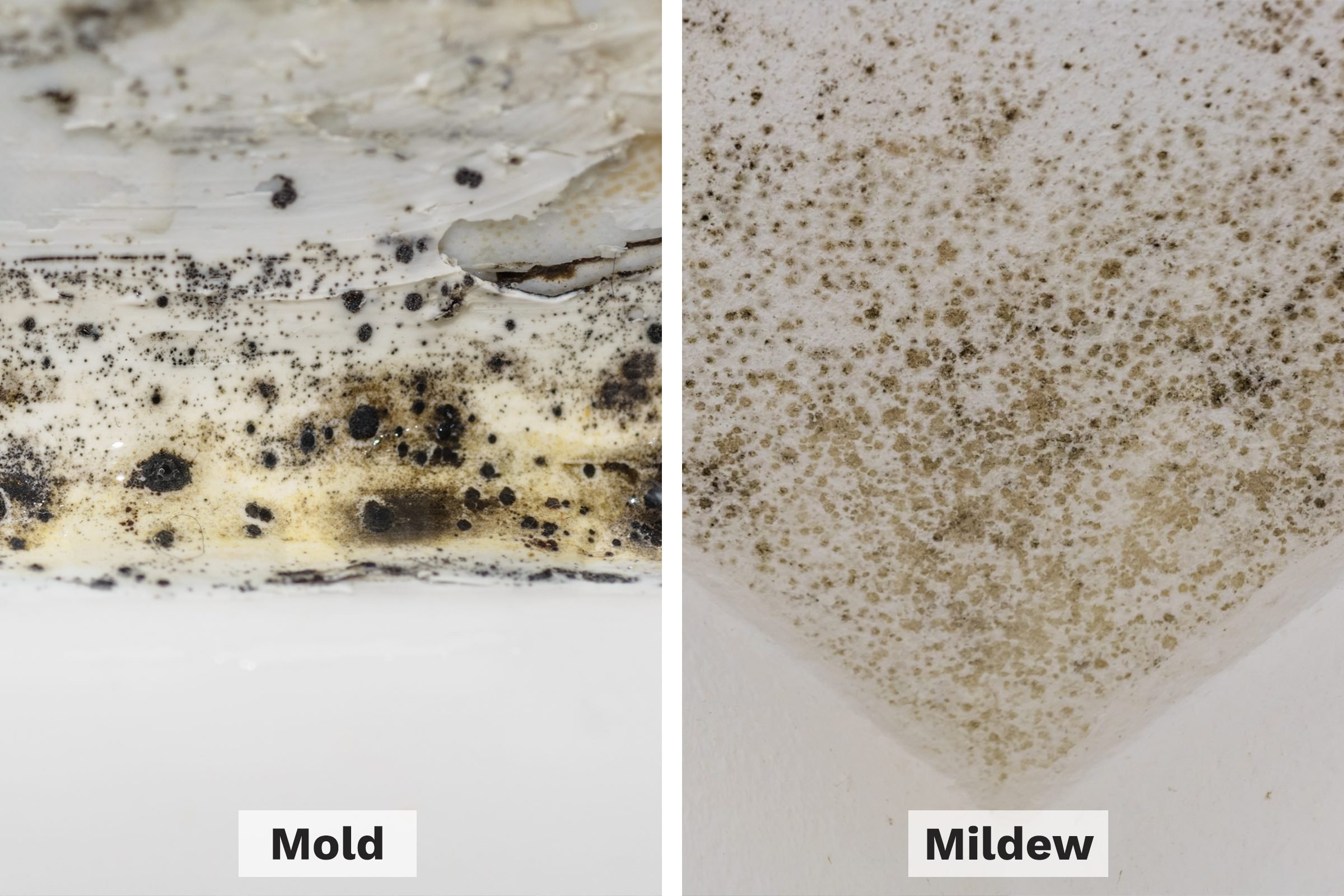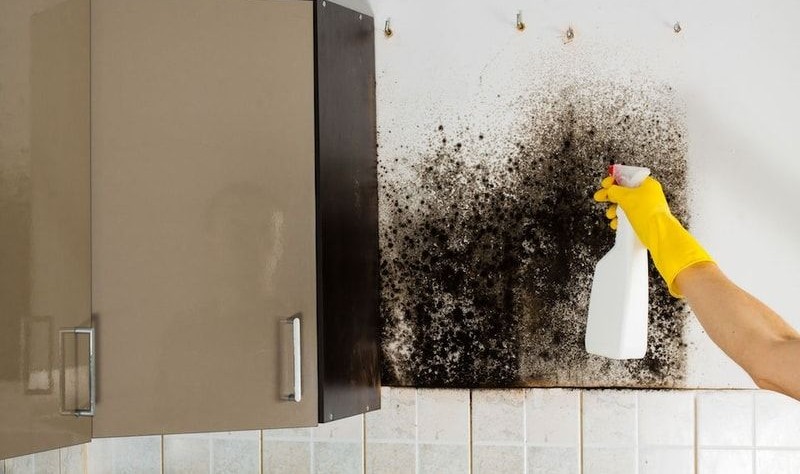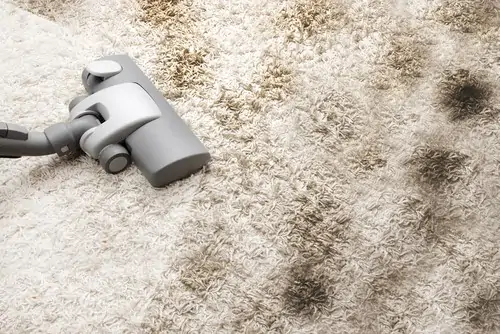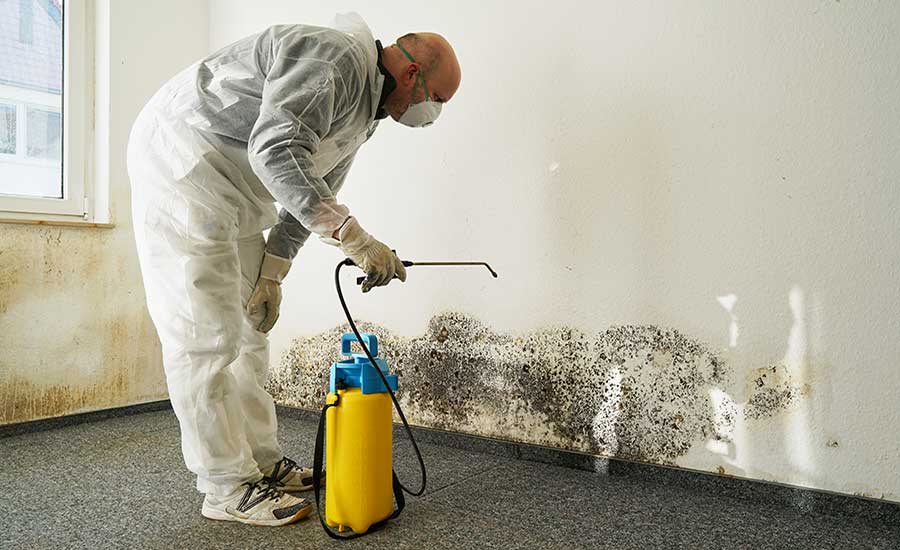
What Is Mildew?
Mildew is a type of fungus that typically grows on flat, moist surfaces. It’s most commonly found in places with high humidity, such as bathrooms, basements, and kitchens. Mildew appears as a white, gray, or yellowish powdery substance and tends to be easier to clean than mold. It generally grows on the surface of materials like tile, wood, or fabric and doesn’t penetrate as deeply as mold.
While mildew is less harmful than mold, it can still cause issues if left untreated. Over time, mildew can leave unsightly stains and cause damage to fabrics, wood, and even walls. In humid environments, mildew can also contribute to a musty odor.
Common Areas Where Mildew Grows
- Shower walls and curtains
- Windowsills
- Bathrooms and kitchens
- Basements with high humidity
- On outdoor plants and garden surfaces
For more on preventing mildew in high-moisture areas like bathrooms, check out this helpful guide from Consumer Reports.
What Is Mold?

Mold is another type of fungus that can grow in damp, humid conditions, but it’s generally more harmful and difficult to remove than mildew. Mold appears as black, green, or brown spots that can penetrate deeply into porous surfaces such as drywall, wood, and carpet. Unlike mildew, which remains on the surface, mold can cause structural damage and lead to serious health risks if left untreated.
According to the CDC, mold exposure can trigger allergic reactions, respiratory problems, and asthma, especially in people with compromised immune systems. Mold thrives in damp, dark areas of the home, such as basements, attics, crawl spaces, and bathrooms.
Common Areas Where Mold Grows
- Basements and crawl spaces
- Behind walls and under floors
- Attics with poor ventilation
- Bathrooms with poor moisture control
- Areas affected by leaks or flooding
How to Tell the Difference Between Mildew and Mold
Although mildew and mold share similarities, there are distinct differences that can help you determine which you’re dealing with:
| Characteristic | Mildew | Mold |
|---|---|---|
| Appearance | Powdery or fluffy, white, gray, or yellowish | Fuzzy or slimy, black, green, or brown |
| Growth Depth | Surface-level growth | Penetrates deep into porous materials |
| Location | Bathrooms, kitchens, windowsills | Basements, walls, floors, attics, areas with leaks |
| Health Risks | Minimal, may cause minor respiratory irritation | Significant, can trigger allergies, asthma, and respiratory issues |
| Damage Risk | Staining or minor surface damage | Structural damage to wood, drywall, and other building materials |
If you’re unsure whether you’re dealing with mold or mildew, it’s always best to err on the side of caution. Mold can spread quickly, and professional inspection services like Citywide Mold Mitigation can help you determine the best course of action.
How to Remove Mildew

Mildew is generally easier to remove than mold because it remains on the surface. Here are a few methods for cleaning mildew from various surfaces:
1. White Vinegar Solution
White vinegar is a natural mold and mildew killer. Simply mix equal parts white vinegar and water in a spray bottle, apply it to the affected area, and let it sit for 10-15 minutes before scrubbing with a brush. This method works well for tiles, shower walls, and other non-porous surfaces.
2. Baking Soda Paste
Baking soda is another great mildew remover, especially for fabric and upholstered surfaces. Create a paste by mixing baking soda and water, then apply it to the mildew and let it sit for 20 minutes. Afterward, scrub and rinse with warm water.
3. Commercial Mildew Cleaners
If you’re dealing with tougher mildew spots, consider using a commercial mildew cleaner. These products are designed specifically to break down mildew and prevent it from returning. Be sure to follow the instructions carefully and use proper ventilation when using chemical cleaners.
For more tips on using natural and chemical cleaners, check out Good Housekeeping’s guide on cleaning mildew.
How to Remove Mold

Mold removal is often more complicated and requires deeper cleaning. Mold penetrates porous materials, so simply wiping it off the surface won’t solve the problem. Here’s how to approach mold removal:
1. Wear Protective Gear
Always wear protective gear when handling mold, including gloves, an N95 mask, and goggles. Mold spores can become airborne and cause respiratory issues, so proper protection is essential.
2. Use Mold-Killing Cleaners
For non-porous surfaces, you can use a mixture of bleach and water (1 cup of bleach to 1 gallon of water) to kill mold. Apply the solution to the affected area, let it sit for 10-15 minutes, and scrub with a stiff brush. Be sure to rinse the area thoroughly after cleaning.
For porous materials like drywall or wood, it’s best to contact a professional mold remediation service, as mold can spread deep into the material and may require replacement. You can learn more about effective mold treatments at Family Handyman’s guide to mold removal.
3. Call a Professional
If the mold covers an area larger than 10 square feet or if it has caused structural damage, it’s time to call in the professionals. Citywide Mold Mitigation can assess the severity of the mold, remove it safely, and implement moisture control solutions to prevent it from returning.
How to Prevent Mildew and Mold from Returning
Whether you’re dealing with mildew or mold, preventing future growth is essential to keep your home safe and healthy. Here are some tips for stopping mildew and mold from returning:
1. Control Humidity
Maintaining low humidity levels in your home is one of the best ways to prevent mold and mildew growth. Use a dehumidifier to keep humidity levels below 50%, especially in high-risk areas like bathrooms, basements, and attics. Learn more about dehumidifier options from Citywide Mold Mitigation’s dehumidifier guide.
2. Fix Water Leaks
Water leaks are a major source of mold problems. Regularly inspect your home for leaks in the roof, plumbing, and foundation, and repair any issues immediately to prevent water from seeping into your walls and floors.
3. Improve Ventilation
Proper ventilation can help reduce moisture buildup in areas prone to mold and mildew. Use exhaust fans in bathrooms and kitchens, and open windows when possible to allow fresh air to circulate through your home.
For more moisture control tips, check out this guide from the U.S. Department of Energy.
FAQ
| Question | Answer |
|---|---|
| Can mildew turn into mold? | Mildew and mold are different types of fungi, but mildew can evolve into mold in certain conditions, especially if moisture and warmth are present. If left untreated, mildew may develop into a more serious mold problem. |
| Which is more dangerous, mildew or mold? | Mold is generally more dangerous than mildew. While mildew can cause minor respiratory irritation, mold can lead to more severe health problems, including allergic reactions and asthma attacks. Mold can also cause significant structural damage to your home. |
| How do I know if I have mold or mildew? | One way to tell is by the color and texture. Mildew is usually white, gray, or yellow and powdery, while mold is often black, green, or brown and has a fuzzy or slimy texture. Mold also tends to grow in larger patches and penetrate deeper into surfaces. |
| Can I remove mold or mildew myself? | Small amounts of mildew can usually be cleaned with household products like vinegar or baking soda. However, mold is more challenging to remove and may require professional help, especially if it covers a large area or has caused damage. |
| When should I call a professional for mold removal? | If mold covers an area larger than 10 square feet or if it has penetrated into walls, floors, or ceilings, it’s best to call a professional like Citywide Mold Mitigation to safely remove it and prevent future growth. |
If you need expert help with mold or mildew in your home, contact Citywide Mold Mitigation today for professional mold remediation and prevention services.

